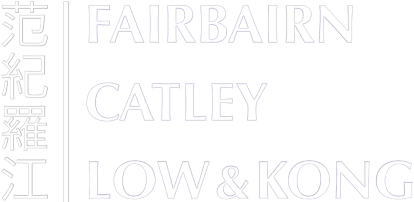1. Introduction
As artificial intelligence (“AI”) technology advances, its impact on creative fields – ranging from literature and music to art and software development – has become increasingly profound. AI systems can now generate works that closely mimic human creativity, prompting a significant reevaluation of authorship and originality. These developments raise critical questions about copyright, a framework traditionally designed to protect human creators. The complexities introduced by AI-generated works challenge existing legal paradigms, igniting debates about the nature of authorship and the adaptability of copyright law in this new landscape.
In light of the extensive discussions surrounding these issues, this article will be published in two parts to provide a comprehensive examination of the evolving relationship between AI and copyright.
1.1 Emergence of AI-generated Works
AI-generated content has rapidly proliferated across various creative domains. AI tools can compose poetry and narratives that are often indistinguishable from human-written texts. In music, algorithms can create original compositions, leading to the emergence of AI-generated soundtracks and songs that have garnered both acclaim and controversy. Visual arts have also witnessed a surge of AI-generated images, with platforms like DALL-E and Midjourney producing artworks that provoke discussions about creativity and ownership. Additionally, the rise of publicly accessible AI platforms has democratised the creation of AI-generated works, allowing a broader audience to experiment with and generate content. This has led to a remarkable increase in the volume and variety of AI-generated creations, from intricate visual art to innovative literary pieces and music compositions.
This emergence of AI-generated works not only expands the creative landscape but also challenges conventional notions of authorship and artistic expression, prompting a reevaluation of what it means to be a creator in the modern age.
1.2 Challenges to Existing Copyright Frameworks
As current copyright laws around the globe are primarily designed to protect human creators and their original expressions, the rise of AI-generated works complicates this legal framework significantly. These advancements raise pivotal questions about ownership and the rights associated with such works. If a piece of art is created by an AI, who holds the copyright? Is it the programmer, the user of the AI, or the AI itself? The concept of originality, a cornerstone of copyright law, becomes ambiguous when considering creations produced by algorithms.
Furthermore, AI systems often analyse extensive datasets to create new content, a process that typically involves making digital copies of existing works. For example, OpenAI acknowledges that its programs are trained on large, publicly available datasets that include copyrighted works, indicating that this training involves creating copies of the data for analysis. Such practices may infringe upon copyright holders’ exclusive rights not to reproduce their works without permission.
In this article, we will explore the controversies surrounding these issues from two primary perspectives: the output perspective, which focuses on copyright for works produced by generative AI; and the input perspective, which examines copyright infringement related to the AI training process.
2 The Output Perspective: Authorship and Ownership
2.1 Global Landscape
Globally, various jurisdictions are grappling with the implications of AI-generated works on copyright law. Notable cases include the U.S. case of Naruto v. Slater, where a monkey named Naruto took a selfie, raising questions about non-human authorship and copyright. The U.S. courts denied copyright protection to non-human authors, ruling that Naruto lacked standing to sue under the Copyright Act. While not directly related to AI, this case sets a precedent for discussions about authorship beyond traditional boundaries.
On the other side of the globe, the recent Chinese case Li Yunkai v. Liu Yuanchun ruled that an image generated by text-to-image generation software could be granted copyright as an artistic work. This stark difference illustrates how the Chinese courts perceives AI as a tool for facilitating human creativity. On the other hand, the U.S. courts have maintained that AI users do not exert sufficient creative control over AI outputs and classified the technology merely as a tool, given that it produces results in unpredictable ways. These cases demonstrate the diverse approaches courts take in navigating the complexities of authorship and originality in the realm of AI.
2.2 Position in Hong Kong
Different jurisdictions interpret the implications of AI on copyright in varied ways. While some countries are beginning to recognise certain AI-generated works as eligible for copyright protection, others maintain strict requirements for human authorship.
Hong Kong mirrors the United Kingdom’s progressive approach, following the UK Copyright, Designs and Patents Act 1988, which stipulates that works produced by or with the assistance of a computer can be granted copyright protection, with ownership given to the individual who facilitated the creation. Generally, works that exhibit original human creativity qualify for copyright protection, even if AI played a role in their production.
In a recent consultation concerning the introduction of a new text and data mining exception, the Hong Kong government indicated that the existing Copyright Ordinance (Chapter 528 of the Laws of Hong Kong) already provides protection for AI-generated works. The government emphasised that the current legal framework is sufficiently flexible to accommodate the complexities of computer-generated content. This flexibility facilitates the inclusion of AI-generated materials within the existing framework of copyright protection, ensuring that different stakeholders can effectively safeguard their rights over AI-generated works.
As we wrap up our discussion of the output perspective, stay tuned for an exploration of the intricate complexities surrounding data usage and copyright implications in the next part of the article.


